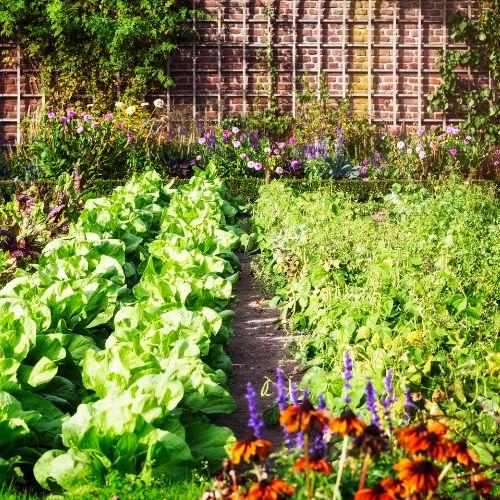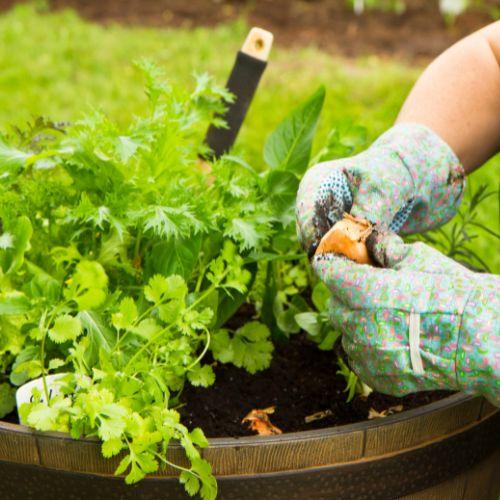Choosing the Right Type of Soil for Plants
Choosing the right type of soil is essential for the health and growth of your plants. The appropriate soil provides vital nutrients, retains moisture, and ensures proper drainage, all of which contribute to strong plant development. Whether you’re growing vegetables, flowers, or houseplants, understanding the different types of soil available will empower you to make informed decisions. This guide will help you explore the best plant soil options for your gardening needs, ensuring your plants thrive and flourish in their environment. With the right soil, you can create a vibrant and healthy garden that brings joy and beauty to your space.

Understanding Different Types of Soil
There are several types of soil that gardeners should be familiar with, including sandy, clay, silt, loam, and peat. Each type has unique characteristics that affect how well plants can grow in them. For more information on various plant soil options, visit our soils and composts section.
Sandy Soil
Sandy soil consists of large particles that create spaces for air and water to flow easily. While it drains quickly, it does not retain nutrients well. This type of soil is ideal for plants that prefer drier conditions, such as succulents and some herbs.
Clay Soil
Clay soil is made up of very fine particles that compact tightly, leading to poor drainage and aeration. It holds nutrients well but can become waterlogged, making it difficult for some plants to thrive. Plants that tolerate wet conditions, like rice, can do well in clay soil.
Silt Soil
Silt soil is composed of medium-sized particles that retain moisture and nutrients better than sandy soil. It has a smooth texture and is fertile, making it suitable for a wide variety of plants. However, it can become compacted, which may hinder root growth.
Loam Soil
Loam soil is a balanced mixture of sand, silt, and clay, making it the ideal plant soil for most gardening needs. It retains moisture and nutrients while providing excellent drainage. Many vegetables and flowers thrive in loam soil due to its balanced properties.
Peat Soil
Peat soil is rich in organic matter and retains moisture exceptionally well. It is often used for acid-loving plants like blueberries and azaleas. While it can significantly enhance soil structure and overall fertility when mixed with other soil types, it's not particularly applicable for most Australian soils.
Soil Requirements for Common Plants
Understanding the specific soil requirements for different types of plants is crucial for a thriving garden. Gardening soil for vegetables typically needs to be rich in organic matter, well-draining, and slightly acidic to neutral (pH 6.0-7.0). Tomatoes, for instance, prefer loamy soil with good drainage, while leafy greens like spinach thrive in nutrient-rich, moisture-retentive soil. Flowers have varied soil needs. Roses prefer clay-loam soil that's rich in organic matter, while lavender thrives in well-draining, slightly alkaline soil. Annuals like marigolds are adaptable but flourish in loamy, fertile soil. Houseplants generally require well-draining potting mix. Succulents need sandy, quick-draining soil, while tropical plants like ficus prefer moisture-retentive, organic-rich mixes. Herbs often prefer well-draining, moderately fertile soil. Mediterranean herbs like rosemary and thyme thrive in sandy, slightly alkaline soil, while basil and parsley prefer richer, more moisture-retentive soil. Understanding these different soils for plants allows gardeners to create the ideal growing conditions in their garden. For example, adding organic matter to clay soil can improve drainage for vegetables, while mixing sand into loamy soil can create a more suitable environment for drought-tolerant plants. By tailoring soil conditions to each plant's needs, gardeners can ensure robust growth and, when it comes to vegetables and herbs, more productive harvests.
Soil for Vegetable Gardens
Using high-quality gardening soil for vegetables is essential. The ideal soil for a vegetable garden should be rich in organic matter, well-draining, and have a pH level between 6.0 and 7.0. A loamy mix that incorporates compost will provide the necessary nutrients and moisture retention. Additionally, consider adding garden lime to balance the soil's pH and enhance nutrient availability. This is particularly beneficial for crops like tomatoes and peppers.

Soil for Flower Gardens
Creating a vibrant flower garden starts with selecting the right garden soil for flowers. The ideal soil for most flowering plants is well-draining, rich in organic matter, and slightly acidic to neutral (pH 6.0-7.0). A loamy soil texture provides the perfect balance of moisture retention and drainage that flowers need to thrive.
To achieve the best soil for your flower garden, consider using a high-quality organic soil mix as your foundation. Daisy's Organic Mix is an excellent choice, providing a nutrient-rich environment for your flowers. If your native soil is heavy clay, mix in some sand or perlite to improve drainage and prevent waterlogging. Adding organic matter, such as compost or well-rotted manure, improves soil structure, increases nutrient content, and enhances beneficial microbial activity. Remember to consider specific flower needs; some flowers prefer slightly acidic soil, while others thrive in more alkaline conditions. You can adjust your soil pH accordingly using lime or sulphur.

Soil for Houseplants
When it comes to what growing media to use for houseplants, the key is to provide a well-draining, lightweight medium that allows roots to breathe while retaining enough moisture. Most houseplants thrive in a potting mix rather than garden soil, which can be too heavy and prone to compaction. Our potting mix range offers excellent options that are light and drain well, perfect for houseplants. Look for mixes that include perlite or vermiculite to improve aeration and prevent soil compaction. While drainage is crucial, the growing media should also retain some moisture. Ingredients like peat moss or coco coir help achieve this balance. A good potting mix should contain slow-release fertilisers to provide nutrients over time. Most houseplants prefer slightly acidic to neutral soil (pH 6.0-7.0). Remember to choose a potting mix suited to your specific plant's needs. For instance, succulents and cacti require a more sandy, fast-draining mix, while tropical plants might prefer a richer, more moisture-retentive soil.

Soil for Herbs
Creating the right soil for herbs is essential for a healthy and thriving herb garden. Most herbs prefer well-draining, moderately fertile soil with a pH between 6.0 and 7.0. Daisy's Organic Mix provides an excellent foundation, offering the right balance of nutrients and drainage. Mediterranean herbs like rosemary and thyme thrive in quick-draining soil. If your soil is heavy, mix in sand or perlite to enhance drainage. While herbs don’t require overly rich soil, adding compost can improve soil structure and provide slow-release nutrients. Consider specific needs: mint and parsley prefer slightly moisture-retentive soil, while sage and oregano thrive in drier conditions. Many herbs do well in containers, allowing you to tailor the soil to each plant's needs. Avoid over-fertilising, as most herbs prefer lean soil for optimal flavour.

Tips for Improving Soil Quality
Improving soil quality is essential for healthy plant growth. Here are some practical tips on how to choose garden soil and enhance its quality:
Add Compost: Incorporating compost into your soil enriches it with nutrients and improves structure. Compost helps retain moisture and provides a slow release of nutrients, benefiting plant growth.
Use Mulch: Applying a layer of mulch helps retain moisture, suppress weeds, and regulate soil temperature. Organic mulches, like straw or wood chips, can also break down over time, adding nutrients back into the soil.
Test Soil pH: Regularly testing your soil's pH can help you understand its nutrient availability and make necessary adjustments. Most plants thrive in a pH range of 6.0 to 7.0. If your soil is too acidic or alkaline, you can amend it accordingly.
Consider Soil Amendments: Depending on your soil type, you may need to add amendments like lime to raise pH levels or sulphur to lower them. Managing this carefully can help create a more suitable environment for your plants.
Explore Quality Products: For improving soil quality, consider using our Revive Compost (available at select stores), Diggers Compost(available at select stores) or Mushroom Compost as an alternative. These products can enhance soil fertility and structure.
Get the Best Soil at Daisy's Garden Supplies
Choosing the right soil is vital for the health of your plants and the success of your garden. At Daisy's Garden Supplies, we offer a wide range of soil types tailored to meet your gardening needs. Whether you're looking for soil for vegetables, flowers, houseplants, or herbs, we have the perfect solutions for you. Visit us today to explore our selection and ensure your plants are growing in the right environment. By understanding the different soils for plants and how to choose the right soil, you can create a thriving garden that flourishes with health and vitality. Don’t hesitate to reach out to our knowledgeable staff for personalised advice on how to choose soil for plants that will best suit your gardening goals. For more information, check out our online delivery and pick-up options at our 9 store locationsor explore our wholesale options.